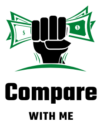
Introduction
The Stepwells of India are some of the most beautiful and impressive structures in the world. These amazing waterworks were built as a way to conserve water in an area that was often parched, and they still serve as a source of clean drinking water today. Some of the best known Stepwells include the Taj Mahal Stepwell in Agra, the Kashi Vishwanath Temple Stepwell in Varanasi, and the Krishna temple stepwells at Dwarka and Mathura.
Stepwells vary greatly in size, shape, and decoration, but all share a common feature: a series of steps that descend into the depth of the well. The wells themselves can be quite deep, and visitors may need to use a stairway or ladder to get down into them. Once inside, visitors are surrounded by lush gardens with fountains and ponds. Many Stepwells also boast religious sculptures and paintings on their walls.
The Stepwells of Bharatpur
Bharatpur, Rajasthan is a land of immense beauty and hidden gems. The city is well-known for its stunningly well-preserved stepwells dating back to the 12th century. Bharatpur’s stepwells are some of the most photographed sites in Rajasthan and make for perfect day trips from Jaipur.
One of the best ways to experience Bharatpur’s stepwells is by taking a guided tour. There are several operators that offer day tours, as well as longer itineraries that explore more than one stepwell. Some tours include visits to local handicraft villages and traditional food stalls.
A few tips for visiting Bharatpur’s stepwells:
-Check with your operator about entrance fees and hours of operation.
-Pack sunscreen, hats, sunglasses, and mosquito repellent; these destinations can be very hot and sunny!
-Beach towels or sandals will come in handy for exploring the waterfalls and lakes found throughout Bharatpur.
The Stepwells of Jaipur
The Stepwells of Jaipur are some of the most beautiful and intricate structures in India. These magnificent waterworks date back to the 13th century and are still in use today. Some of the more famous stepwells include the Lotus Temple, the Amber Fort, and the Jantar Mantar.
Stepwells are actually quite simple in construction: a series of staircases leads down to a deep pool at their base. The steps themselves can be carved out of different kinds of stone, and often have elaborate carvings on both sides. Many stepwells also have gardens or fountains at their entrances, making them attractive places to spend a relaxing afternoon.
The Stepwells of Jaipur are an excellent way to explore one of India’s most important treasures: its architecture. Whether you’re visiting for a day or spending several days exploring each site, these waterworks will fascinate you from top to bottom.
The Stepwells of Udaipur
The intricate and beautiful stepwells of Udaipur are a must-see for anyone visiting the city. Constructed between the 14th and 17th centuries, these water reservoirs were once used to provide clean drinking water to the residents of Udaipur. Nowadays, they are a popular tourist destination, with visitors able to explore numerous examples of these fascinating structures.
Some of the best stepwells in Udaipur include the Ranjit Sagar Stepwell (also known as the Chandni Chowk Stepwell), Sahelian Well, and Shiwalik Well. The Ranjit Sagar Stepwell is particularly impressive, boasting a series of lovely arches and carvings that give it an elegant appearance. The Sahelian Well is also very well-preserved, with its walls lined with ornate tiles depicting scenes from Hindu mythology.
Stepwells can be found throughout India, but they are particularly prominent in Rajasthan due to the region’s hot and dry climate. These complexes of underground reservoirs were an important source of clean water for the residents of Udaipur and other cities during this time period, and continue to be popular tourist destinations today.
The Stepwells of Ajmer
The Stepwells of Ajmer are some of the most breathtakingly elegant structures in India. These marvels of architecture were built as public bathhouses in the 12th century, and still serve as a source of recreation and relaxation for locals today.
Ajmer’s stepwells are some of the best-preserved examples of their type in India, and they remain popular tourist destinations today. The complexes are impressively large, with many featuring elaborate carvings and intricate tilework. Some even contain beautiful gardens inside them.
Visitors can explore all the stepwells in Ajmer on foot, or take a ride on one of the local boats that frequent the area. It’s also possible to visit them during festivals like Holi or Dussehra, when they’re illuminated by lanterns and transformed into a magical wonderland.
The Stepwells of Badrinath
Stepwells are an ancient and unique form of water management in India. They were originally built as ornamental water features in temples and gardens, but today they serve a practical purpose by providing reliable access to clean drinking water.
The Stepwells of Badrinath are a spectacular example of these monuments. The 12 steps leading down to the water provide an inviting place to rest and enjoy the view. The well itself is decorated with beautiful carvings and paintings, and visitors can take guided tours or explore on their own.
The Stepwells of Badrinath are just one of many hidden gems waiting to be discovered in India. Whether you’re looking for stunning landscapes, interesting history, or refreshingly cool waters, there’s sure to be something special waiting for you in this vibrant country.
Conclusion
India is a vast country with many different cultures and landscapes. One of the most popular tourist destinations in India is Rajasthan, where visitors can explore the beautiful stepwells. Stepwells are man-made water reservoirs that were built in medieval India as prestige structures for wealthy families. Today, many of these magnificent structures remain largely undiscovered and offer tourists an opportunity to explore some of India’s hidden gems.






